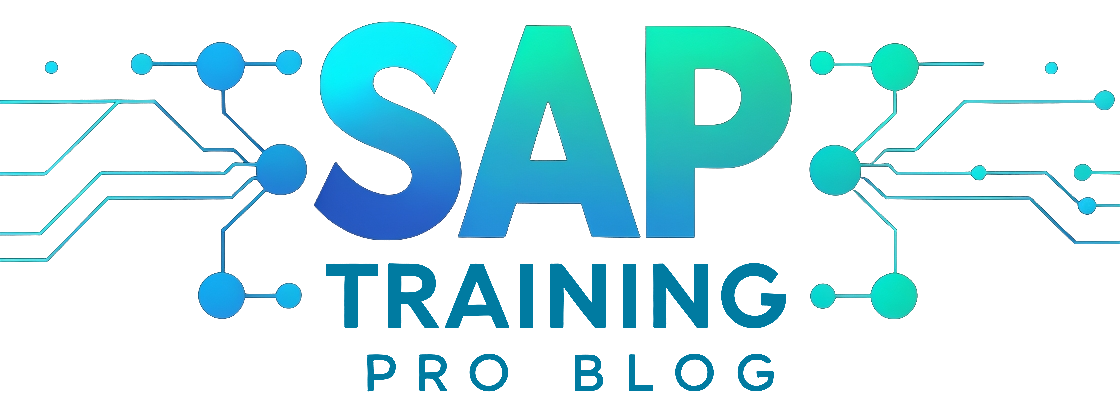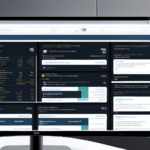SAP Modules books: Must-Read Books for SAP Modules Enthusiasts

Discover the essential books that every SAP Modules enthusiast should read to enhance their knowledge and skills in SAP. These books cover a range of topics, from SAP implementation to advanced configuration techniques.
Table Of Content
- 1. SAP Implementation Guide
- 2. Mastering SAP Configuration
- 2.1 Configuring SAP Financials
- 2.1.1 Advanced Asset Accounting Configuration
- 2.1.2 Configuring SAP Controlling
- 2.2 Configuring SAP Sales and Distribution
- 3. SAP Business Intelligence and Analytics
- 3.1 SAP BW: A Comprehensive Guide
- 3.2 SAP HANA: An Introduction
- 4. SAP Career Development
- 4.1 SAP Certification Guide
- 4.2 SAP Consulting: A Practical Guide
- 5. SAP Industry Solutions
- 5.1 SAP for Manufacturing
- 5.2 SAP for Retail
- 5.3 SAP for Healthcare
1. SAP Implementation Guide
Learn the step-by-step process of implementing SAP modules in an organization. This book provides practical insights and best practices for successful SAP implementation projects.
Implementing SAP modules can be a complex and challenging task, but with the right guidance, it can also be a rewarding experience. The “SAP Implementation Guide” is a comprehensive resource that takes you through the entire implementation process, from planning to go-live.
This book covers all the essential steps involved in implementing SAP modules, including project scoping, system configuration, data migration, user training, and post-implementation support. It provides practical insights and best practices that can help you avoid common pitfalls and ensure a successful implementation.
Whether you are a project manager, business analyst, or IT professional involved in SAP implementation projects, this book is a valuable reference guide. It offers a step-by-step approach, along with real-world examples, tips, and tricks that can help you streamline the implementation process and maximize the benefits of SAP modules.
By following the guidance provided in the “SAP Implementation Guide,” you can ensure that your SAP implementation project is completed on time, within budget, and meets the specific needs of your organization. So, if you are looking to enhance your knowledge and skills in SAP implementation, this book is a must-read.
2. Mastering SAP Configuration
Gain a deep understanding of SAP configuration techniques and learn how to customize SAP modules to meet specific business requirements. This book is a comprehensive guide for SAP consultants and configuration experts.
In the world of SAP, configuration is key to optimizing the system to align with your organization’s unique needs. Mastering SAP Configuration offers a step-by-step approach to configuring SAP modules, providing you with the knowledge and skills to tailor the system to your business requirements.
This comprehensive guide covers a wide range of topics, including:
- Understanding the SAP configuration framework
- Customizing SAP modules to meet specific business processes
- Configuring master data, organizational structures, and data migration
- Integrating SAP modules with other systems
Whether you are a seasoned SAP consultant or new to the field, this book serves as a valuable resource for enhancing your configuration skills. With practical examples and real-world scenarios, you will learn best practices for configuring SAP modules effectively and efficiently.
Unlock the full potential of SAP by mastering the art of configuration. Empower yourself with the knowledge and skills to optimize SAP modules and drive business success.
2.1 Configuring SAP Financials
Explore the intricacies of configuring SAP Financials module, including general ledger, accounts payable, accounts receivable, and asset accounting. This book covers both basic and advanced configuration topics.
Configuring SAP Financials is a crucial aspect of implementing SAP modules in an organization. This book provides a comprehensive guide to understanding the intricacies involved in configuring SAP Financials module. From the general ledger to accounts payable, accounts receivable, and asset accounting, this book covers all the essential topics.
Whether you are a beginner or an experienced SAP consultant, this book is a valuable resource for enhancing your knowledge and skills in configuring SAP Financials. It not only covers the basics but also delves into advanced configuration techniques, ensuring that you have a thorough understanding of the module.
With practical insights and best practices, this book equips you with the necessary tools to successfully configure SAP Financials according to your organization’s specific business requirements. It provides step-by-step instructions, configuration tips, and real-world examples to guide you through the process.
By exploring the intricacies of configuring SAP Financials, you will gain the expertise needed to effectively manage financial processes, streamline accounting operations, and ensure accurate financial reporting within your organization.
2.1.1 Advanced Asset Accounting Configuration
Discover advanced configuration techniques for SAP Asset Accounting module, such as depreciation areas, parallel valuation, and integration with other SAP modules.
Advanced Asset Accounting Configuration is a crucial aspect of SAP Asset Accounting module. This book delves into the intricacies of configuring depreciation areas, parallel valuation, and integration with other SAP modules. By exploring these advanced configuration techniques, you can optimize the Asset Accounting module to meet specific business requirements.
Depreciation areas allow you to track and manage different types of depreciation for your assets. With the knowledge gained from this book, you will be able to configure depreciation areas effectively, ensuring accurate financial reporting. Additionally, you will learn how to set up parallel valuation, which enables you to maintain multiple valuation approaches for your assets.
Integration with other SAP modules is also a crucial aspect of Asset Accounting configuration. This book provides insights into how Asset Accounting integrates with other modules such as Financials, Controlling, and Sales and Distribution. Understanding this integration is essential for ensuring seamless data flow and comprehensive financial reporting across the organization.
Overall, Advanced Asset Accounting Configuration is a valuable resource for SAP consultants and configuration experts looking to enhance their skills in SAP Asset Accounting. By mastering these advanced configuration techniques, you can optimize the module’s functionality and contribute to the success of SAP implementation projects.
2.1.2 Configuring SAP Controlling
Learn how to configure SAP Controlling module, including cost center accounting, profit center accounting, and internal orders. This book provides practical examples and configuration tips.
The SAP Controlling module plays a crucial role in managing an organization’s financial activities. With this book, you will gain a comprehensive understanding of how to configure SAP Controlling to meet your business needs.
Cost center accounting is an essential component of SAP Controlling. You will learn how to set up cost centers, allocate costs, and analyze cost variances. This knowledge will enable you to track and control costs effectively, ensuring that your organization operates efficiently.
Profit center accounting is another key aspect of SAP Controlling. The book will guide you through the process of configuring profit centers, assigning costs and revenues, and generating profit center reports. You will gain insights into your organization’s profitability and make informed decisions to drive growth.
Internal orders are used to track and control costs for specific projects or activities. By understanding how to configure internal orders in SAP Controlling, you will be able to monitor project expenses, allocate costs, and generate reports to ensure project success.
This book goes beyond theory and provides practical examples and configuration tips. You will learn from real-world scenarios and gain hands-on experience in configuring SAP Controlling. Whether you are a SAP consultant or a finance professional, this book is an invaluable resource for mastering SAP Controlling.
2.2 Configuring SAP Sales and Distribution
Understand the configuration aspects of SAP Sales and Distribution module, including pricing, order management, and delivery processing. This book is a valuable resource for SAP SD consultants.
The SAP Sales and Distribution (SD) module plays a crucial role in managing the sales and distribution processes of an organization. This module enables businesses to streamline their sales operations, from order processing to delivery. To effectively configure the SAP SD module, it is essential to have a deep understanding of its various aspects.
One of the key areas in configuring SAP SD is pricing. This involves setting up pricing procedures, condition types, and pricing conditions to determine the prices of products or services. Additionally, order management is another critical aspect that includes defining order types, item categories, and delivery schedules.
Furthermore, the configuration of delivery processing is vital to ensure smooth and efficient delivery of goods to customers. This involves defining delivery document types, shipping points, and routes. Proper configuration of these aspects in SAP SD module is crucial for businesses to effectively manage their sales and distribution processes.
For SAP SD consultants, the book “Configuring SAP Sales and Distribution” is a valuable resource. It provides comprehensive insights into the configuration aspects of the SAP SD module, covering pricing, order management, and delivery processing in detail. This book serves as a guide for consultants to enhance their knowledge and skills in configuring SAP SD, enabling them to deliver successful implementations for businesses.
3. SAP Business Intelligence and Analytics
Explore the world of SAP Business Intelligence and Analytics and learn how to leverage SAP’s powerful reporting and analytics capabilities. This book is a comprehensive guide that covers a wide range of topics related to SAP BW, SAP HANA, and SAP Analytics Cloud.
SAP Business Intelligence (BI) and Analytics are crucial components for organizations looking to gain valuable insights from their data. With SAP’s robust reporting and analytics tools, businesses can make data-driven decisions and optimize their operations.
The book delves into SAP BW, which stands for Business Warehouse, a data warehousing and reporting solution that enables organizations to integrate data from various sources and create meaningful reports and dashboards. It covers topics such as data modeling, data extraction, and reporting techniques.
In addition, the book explores SAP HANA, an in-memory database platform that provides real-time analytics and data processing capabilities. It discusses the architecture of SAP HANA, data modeling techniques, and how to leverage its advanced features for faster data analysis.
Furthermore, the book introduces SAP Analytics Cloud, a cloud-based analytics solution that allows users to visualize and analyze data from multiple sources. It covers topics such as creating interactive dashboards, designing data models, and sharing insights with stakeholders.
Whether you are a business analyst, data scientist, or SAP consultant, this book will equip you with the knowledge and skills to harness the power of SAP Business Intelligence and Analytics. It provides practical examples, tips, and best practices to help you maximize the value of your organization’s data.
3.1 SAP BW: A Comprehensive Guide
Master SAP BW and learn how to design, develop, and optimize data models for efficient reporting and analysis. This book is a must-have for SAP BW consultants and data architects.
SAP BW, or Business Warehouse, is a powerful data warehousing and reporting solution offered by SAP. It allows organizations to consolidate and integrate data from various sources, enabling comprehensive reporting and analysis. To fully leverage the capabilities of SAP BW, it is essential to have a deep understanding of its design and development principles.
The comprehensive guide on SAP BW covers all aspects of the system, from data modeling to performance optimization. It provides step-by-step instructions on how to design and develop data models that meet specific reporting and analysis requirements. The book also explores advanced topics such as data extraction, transformation, and loading (ETL), as well as data governance and security.
For SAP BW consultants and data architects, this book is an invaluable resource. It equips them with the knowledge and skills needed to effectively design, develop, and optimize data models in SAP BW. By mastering SAP BW, consultants and architects can deliver high-quality reporting and analysis solutions that drive business insights and decision-making.
3.2 SAP HANA: An Introduction
Get an introduction to SAP HANA and understand its architecture, data modeling, and data processing capabilities. This book is ideal for anyone looking to get started with SAP HANA.
SAP HANA is a powerful in-memory database platform that revolutionizes the way data is stored and processed. With its lightning-fast speed and advanced analytics capabilities, SAP HANA enables businesses to make real-time decisions based on up-to-date information.
This book provides a comprehensive introduction to SAP HANA, covering its architecture, data modeling techniques, and data processing capabilities. It is designed for individuals who are new to SAP HANA and want to gain a solid understanding of its features and functionalities.
In this book, you will learn how SAP HANA stores data in memory, allowing for faster data retrieval and analysis. You will also explore various data modeling techniques, such as creating tables, views, and stored procedures, to optimize data storage and retrieval.
Additionally, this book delves into the data processing capabilities of SAP HANA, including advanced analytics, predictive modeling, and machine learning. You will discover how to leverage these capabilities to gain valuable insights from your data and drive business growth.
Whether you are a business professional, an IT consultant, or a data analyst, this book will provide you with the foundation you need to get started with SAP HANA. It offers a clear and concise introduction to SAP HANA’s key features, making it an essential resource for anyone looking to unlock the full potential of this innovative database platform.
4. SAP Career Development
Discover the various career opportunities available in the SAP ecosystem and learn how to build a successful career in SAP. This book provides guidance on certifications, job roles, and professional development.
When it comes to SAP career development, there are endless possibilities waiting to be explored. Whether you are just starting out or looking to advance your existing SAP career, this book is your ultimate guide to success.
One of the key aspects of building a successful career in SAP is obtaining the right certifications. This book provides valuable insights into the different certification paths available and offers tips on how to prepare for certification exams. From understanding the exam syllabus to accessing study materials, you will find all the information you need to ace your SAP certifications.
In addition to certifications, this book also delves into the various job roles within the SAP ecosystem. It provides a comprehensive overview of the different roles, such as SAP consultant, SAP developer, and SAP project manager, along with the skills and qualifications required for each role. Whether you are interested in technical or functional roles, this book will help you navigate the SAP job market with confidence.
Furthermore, this book offers guidance on professional development in the SAP industry. It explores the importance of continuous learning and staying updated with the latest trends and technologies in SAP. From attending conferences and webinars to joining professional networks, you will discover various avenues for enhancing your knowledge and expanding your professional network.
In summary, if you are looking to embark on a successful career in the SAP ecosystem or take your existing career to new heights, this book is a must-read. It provides valuable guidance on certifications, job roles, and professional development, equipping you with the knowledge and skills needed to thrive in the dynamic world of SAP.
4.1 SAP Certification Guide
Prepare for SAP certification exams with this comprehensive guide. This book is essential for anyone pursuing SAP certifications as it covers the exam syllabus, study materials, and tips for exam preparation.
The SAP Certification Guide provides a detailed overview of the topics that will be covered in the certification exams. It outlines the key concepts and skills that candidates need to master in order to pass the exams. The guide also includes sample questions and practice exams to help candidates assess their knowledge and identify areas for improvement.
In addition to the exam syllabus, the guide offers a wide range of study materials, including recommended books, online resources, and training courses. It provides guidance on how to effectively use these resources to prepare for the exams and maximize your chances of success.
Furthermore, the SAP Certification Guide offers valuable tips and strategies for exam preparation. It provides insights into the exam format, time management techniques, and effective study methods. By following the advice in this guide, you can optimize your study time and increase your confidence going into the exams.
Whether you are a beginner looking to start your SAP certification journey or an experienced professional aiming to expand your SAP knowledge, the SAP Certification Guide is an indispensable resource. It will help you navigate the certification process and equip you with the knowledge and skills needed to succeed in your SAP career.
4.2 SAP Consulting: A Practical Guide
Learn what it takes to become a successful SAP consultant and how to navigate the consulting world. This book provides insights into client engagements, project management, and consulting skills.
Are you interested in a career as an SAP consultant? Look no further! The book “SAP Consulting: A Practical Guide” is your go-to resource for all things related to SAP consulting. Whether you are just starting out or looking to advance your career, this book has got you covered.
Inside this comprehensive guide, you will find valuable insights into client engagements, project management, and consulting skills. It offers practical advice on how to effectively communicate with clients, manage projects, and deliver successful SAP implementations. With real-life examples and case studies, you will learn from the experiences of seasoned SAP consultants.
Additionally, this book provides tips and strategies for building strong client relationships, navigating the complex world of SAP consulting, and staying ahead of the game. It covers topics such as stakeholder management, change management, and best practices for delivering high-quality consulting services.
Whether you are a beginner or an experienced SAP consultant, “SAP Consulting: A Practical Guide” is a must-read to enhance your consulting skills and take your career to the next level. Get ready to embark on an exciting journey in the world of SAP consulting!
5. SAP Industry Solutions
Explore SAP’s industry-specific solutions and learn how SAP modules are tailored to meet the unique requirements of different industries. This book covers industries such as manufacturing, retail, and healthcare.
SAP understands that each industry has its own set of challenges and requirements. That’s why they have developed industry-specific solutions that are designed to address the unique needs of businesses in various sectors. Whether you work in manufacturing, retail, or healthcare, SAP has modules that can help optimize your operations and drive growth.
In the manufacturing industry, SAP offers modules for production planning, material management, and quality management. These modules enable manufacturers to streamline their processes, manage their inventory effectively, and ensure the highest levels of product quality.
Retail businesses can benefit from SAP modules that cover merchandise management, pricing, and promotions. These modules help retailers optimize their supply chain, manage their inventory, and deliver personalized customer experiences.
In the healthcare industry, SAP provides modules for patient management, electronic medical records, and healthcare analytics. These modules enable healthcare providers to streamline their operations, improve patient care, and make data-driven decisions.
By exploring SAP’s industry-specific solutions, you can gain a deeper understanding of how SAP modules can be customized to meet the unique requirements of your industry. Whether you are a consultant, a business owner, or an aspiring SAP professional, this book is a valuable resource that can help you unlock the full potential of SAP in your industry.
5.1 SAP for Manufacturing
Discover how SAP modules are configured for manufacturing companies, including production planning, material management, and quality management. This book is a valuable resource for SAP consultants in the manufacturing industry.
In the manufacturing industry, efficient production planning and material management are crucial for success. SAP modules offer comprehensive solutions to streamline these processes and optimize resource utilization. With SAP’s production planning module, manufacturing companies can create detailed production schedules, allocate resources effectively, and monitor production progress in real-time.
Material management is another key aspect of manufacturing operations. SAP’s material management module enables companies to manage their inventory, procurement, and supply chain processes efficiently. From managing purchase orders to tracking material movements, SAP provides a holistic solution to optimize material flow and reduce costs.
Quality management is essential in the manufacturing industry to ensure that products meet the required standards. SAP’s quality management module allows companies to define and enforce quality control processes, track quality issues, and implement corrective actions. By integrating quality management with other SAP modules, manufacturers can ensure consistent product quality and customer satisfaction.
For SAP consultants working in the manufacturing industry, understanding how SAP modules are configured for manufacturing processes is essential. This book provides a comprehensive guide to SAP’s manufacturing solutions, covering topics such as production planning, material management, and quality management. It offers practical insights, configuration tips, and best practices to help consultants optimize SAP implementation for manufacturing companies.
5.2 SAP for Retail
Learn how SAP modules are utilized in the retail industry, covering areas such as merchandise management, pricing, and promotions. This book provides insights into the specific challenges and solutions in retail.
In the retail industry, effective merchandise management is crucial for success. With SAP modules, retailers can streamline their inventory management processes, optimize stock levels, and ensure the right products are available at the right time. This book offers valuable guidance on how to configure SAP modules for merchandise management, enabling retailers to improve their supply chain efficiency and enhance customer satisfaction.
Pricing is another key aspect of retail operations. SAP provides powerful pricing functionality that allows retailers to define complex pricing strategies, manage discounts, and implement promotional campaigns. By understanding how to leverage SAP modules for pricing, retailers can maximize their profitability and gain a competitive edge in the market.
Promotions play a vital role in driving sales and attracting customers. SAP modules offer comprehensive tools for planning, executing, and analyzing promotional activities. This book delves into the intricacies of utilizing SAP modules for promotions, guiding retailers on how to design effective campaigns, track their performance, and make data-driven decisions to optimize results.
By exploring the specific challenges faced by the retail industry and providing practical solutions, this book equips SAP enthusiasts with the knowledge and skills necessary to excel in the retail sector. Whether you are a retail professional or an SAP consultant working with retail clients, this book is a valuable resource for understanding and leveraging SAP modules in the dynamic world of retail.
5.3 SAP for Healthcare
Discover how SAP modules are implemented in the healthcare industry to streamline operations and improve patient care. This comprehensive guide covers various aspects of SAP’s healthcare solutions, including patient management, electronic medical records (EMR), and healthcare analytics.
With SAP’s patient management module, healthcare organizations can efficiently manage patient information, appointments, and medical history. This module enables seamless coordination between different departments, ensuring that patients receive the right care at the right time.
The electronic medical records (EMR) functionality of SAP allows healthcare providers to digitize and store patient records securely. This not only eliminates the need for paper-based records but also enables quick access to patient information, improving the efficiency of healthcare delivery.
Furthermore, SAP’s healthcare analytics capabilities enable organizations to analyze large volumes of healthcare data and gain valuable insights. By leveraging these analytics tools, healthcare providers can identify trends, monitor patient outcomes, and make data-driven decisions to improve overall healthcare quality.
Whether you are a SAP consultant or a healthcare professional looking to optimize your organization’s SAP implementation, this book is a valuable resource. It provides in-depth knowledge and practical guidance on leveraging SAP modules to enhance healthcare operations and deliver better patient care.


